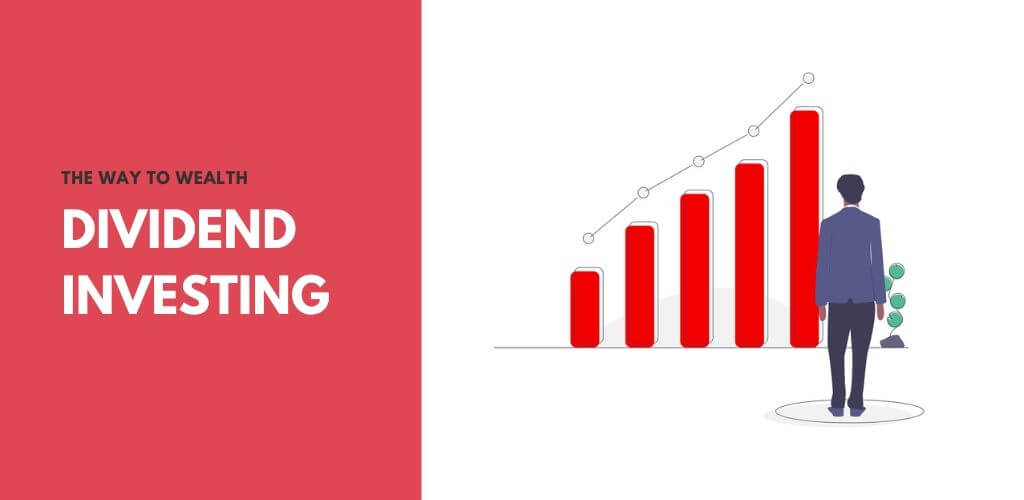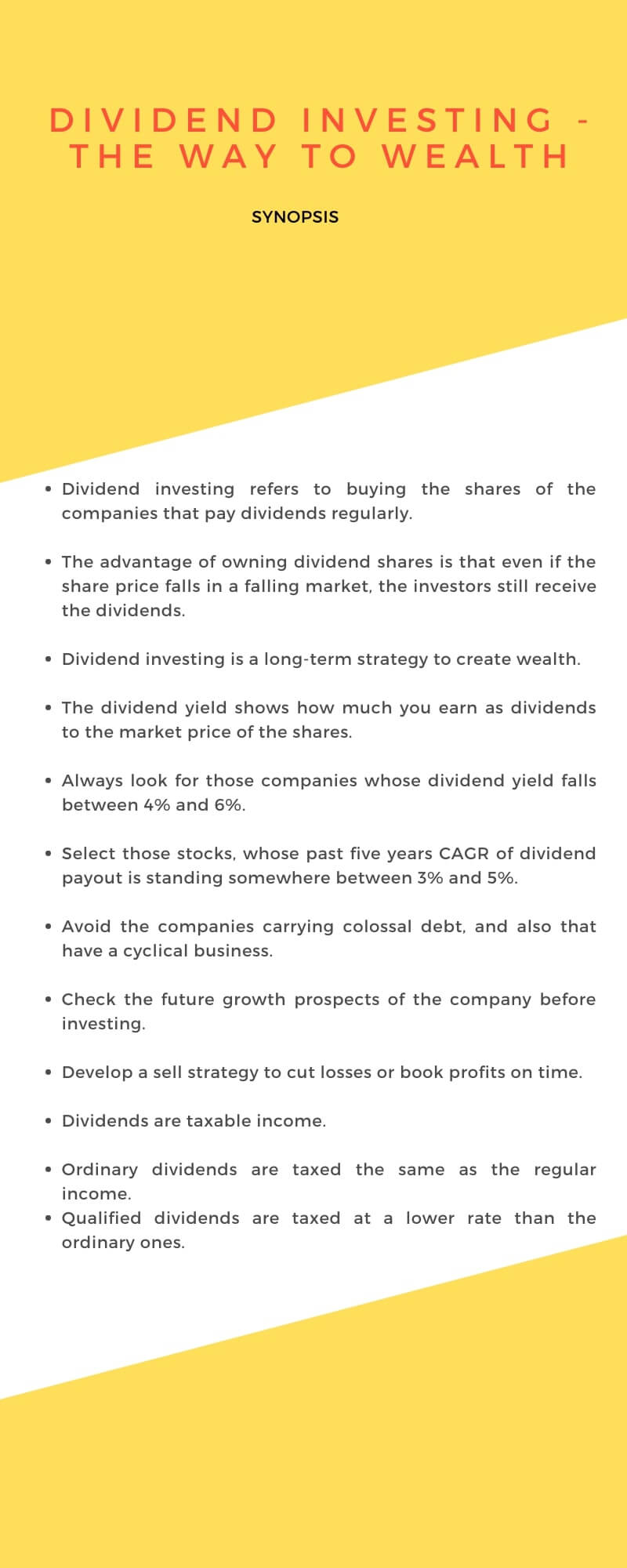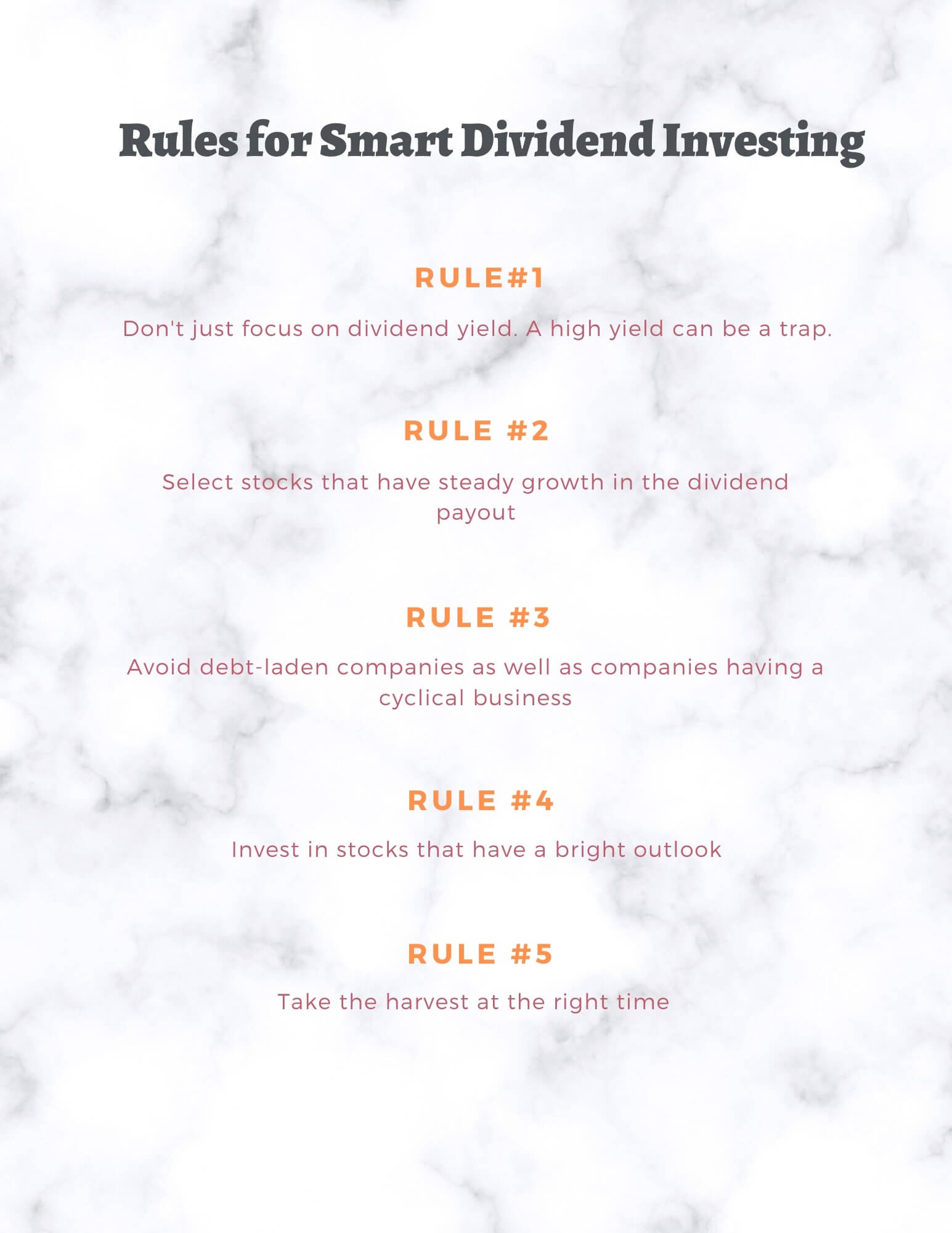Dividend Investing in 2020 - The Way to Wealth

As we are ready to say adieu to 2019 and are all set to greet 2020, our investment strategies also need a review. In a time when the fear of recession is hovering around, and expenses are skyrocketing, it's essential to find ways to maximize returns from investments.
Dividend investing is one of the best strategies to increase the profits from the stock market investments.
What is the dividend investing strategy?
Dividend investing refers to buying the shares of the companies that pay dividends regularly. Many fundamentally strong companies pay out a big pie of their profits to the shareholders as dividends quarterly/semi-annually or annually. It makes these companies less risky to own than the others.
For example: Company ABC consistently pays quarterly dividends. In the last fiscal, it declared $0.5 per share in each quarter. The shares of ABC are currently trading at $35. Then the dividend yield of ABC is calculated as:
Dividend yield = Annual dividend per share/ Market price of the share
= (0.5+0.5+0.5+0.5)/35= 0.057=5.7%
It implies an investor shall earn 5.7% on shares of Company ABC in the form of dividends.
The advantage of owning these shares is that even if the share price falls in a falling market, the investors still receive the dividends. Thus, the dividends act as the cushion under the share price.
Dividend investing is one of the best strategies to create wealth over the long-term.

Rules for smart dividend investing
Picking the best quality dividend stock is not as easy as it sounds. Many people get into dividend traps by following dividend yield.

Below are some rules for smart dividend investing
- Rule#1
The dividend yield shows how much you earn as dividends to the market price of the shares. It's expressed in terms of percentage.
There are many companies whose dividend yield exceeds 20%, which is merely a trap. This exceptionally high dividend payout is the result of either some extraordinary income, which is not sustainable or a falling market price.
Always look for those companies whose dividend yield falls between 4% and 6%. - Rule#2
Check the dividend history of the stock. A good dividend-paying stock is one with a strong history of steadily increasing dividends. Before investing, make sure that the company's dividend payout is not stagnant, or it has not undergone a cut recently. Select those stocks, whose past five years CAGR of dividend payout is standing somewhere between 3% and 5%. - Rule#3
Check the debt level of the company. Some companies pay dividends regularly, but they carry a massive burden of debt. Verify the debt-equity ratio of the company. A higher value shows the company is borrowing more.
Avoid these companies as the chances are more likely that they may soon cut the dividend payout significantly or may not pay dividends for a while to pay off the debts.
Avoid companies that have a cyclical business. The performance of these companies is not sustainable. Due to favorable conditions, they report good results for a few quarters, and consequently, a high dividend payouts, which may not be sustainable in the long run. - Rule#4
Go for the growth opportunity test. In the stock market investing, the past performance of the stock never guarantees future growth. Avoid the shares of those companies, whose outlook is very bleak. Focus on the companies that have a strong dividend payout history and at the same time, have the potential to grow over time. - Rule#5
Book profits and cut losses. Even though 'buy and hold' is the principle of dividend investing, investors should develop a sell strategy. It helps to preserve profits and also to cut losses.
All investments should have a goal, and taking the harvest at the right time ensures higher returns. Start booking the profit partially when the investments have reached closer to the goal and let the remaining portion grow further.
Sometimes, the price of the shares may fall so sharply that these losses may be more than the dividends you get. In such cases, check the causes for the price decline, and if the reasons are grave, then sell the shares immediately to cut further losses.
The advantages and disadvantages of dividend investing
Advantages:
- Dividend paying companies are usually more mature and stable than other companies
- Shares of dividend paying companies tends to be less volatile and they help in creating a good amount of wealth in long term.
- Dividend investing helps in generating a steady income
- Reinvesting dividend earnings helps in increasing the number of shares and thereby generating more income in the future
Disadvantages:
- Generally dividend paying stocks see less price appreciation than other stocks
- Share prices can drop whether the stock pays dividends or not
- Dividend investing tends to concentrate on a few stocks rather than diversifying
- Companies can minimize or eliminate its dividend payment at any time without notice
- Tax rates on dividends can rise, making dividend stocks a less attractive option
The important dates to know while investing in dividend stocks
There are specific important dates that every dividend investor should remember, and they are:
- Trade date: The day on which you execute the order to buy/sell the security in the market. On the trade day, buyers are required to pay the funds to the seller, and at the same time, sellers are obliged to have enough shares in their account to transfer to the buyers.
- Settlement date: The date in which the actual transfer of shares occurs, i.e., from the seller's account to the buyer's account.
- Ex-dividend date: Ex-date or ex-dividend date determines whether you're eligible to receive the forthcoming, scheduled dividend. If you own the shares before ex-date, then you are qualified to get the dividend. But, if you purchase the shares on or after the ex-date, then you have to wait until the next dividend cycle to get paid.
- Record date: The date when dividends are recorded in the book. In other words, on the record date, the company finalizes who gets dividends and who doesn't. Usually, it falls two working days after the ex-date.
- Payment date: The dividend is paid on the pay date to the shareholders.
How are dividends taxed?
Dividends are taxable income, and they are usually classified into two categories - qualified and ordinary. Ordinary dividends are taxed the same as regular income.
Qualified dividends have certain advantages over ordinary ones. Their tax rate is lower than the ordinary dividends, and the tax rates are 0%, 15%, or 20% depending upon the investor's taxable income and filing status.
The dividends that meet the following criteria are called qualified dividends:
- The dividend must be paid by a U.S. corporation or a qualified foreign corporation.
- The shares must meet the holding period requirements. The investor must hold the stock for more than 60 days during the 121 day period that begins 60 days before the ex-dividend date.
The final word
A solid dividend investing strategy is the best way to augment the returns from the stock market investments. But, investors should check the fundamentals of the company before investing.
Never get into the dividend trap of fundamentally weak companies. Also, keep in mind that re-balancing the portfolio periodically is inevitable in all investment strategies.
Tags: Dividend Investing Strategy, Dividend Investing Blog, How to start dividend Investing.